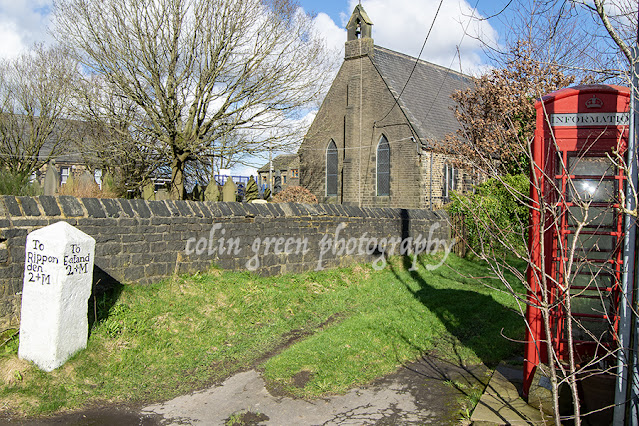The Copley Viaduct, a stoic sentinel of stone and rail, is a familiar and imposing sight to many in the Calderdale valley. Its grand, rhythmic arches, usually captured and admired from the more accessible Copley side of the river, are a profound testament to the ambition and structural ingenuity of Victorian engineering. However, on a crisp 5th of November in 2016, armed with my trusty Nikon d3300, I embarked on a personal quest to unveil a lesser-seen, often-overlooked side of this magnificent structure – the view from the wilder, higher Norland embankment.
The Quest for a New Angle
My intention was born from a desire for a unique perspective. The viaduct, an integral part of the railway line stretching towards Halifax, is the longer and more impressive of the two major crossings in the area. Yet, the rugged Norland bank of the River Calder at this point is rarely photographed. I wanted to see it through fresh eyes, framed by the wild, untamed beauty of the western slope, capturing the interplay between the raw landscape and the man-made marvel.
The viaduct itself, a Grade II listed structure completed in 1852 for the Lancashire and Yorkshire Railway, is a marvel designed by the prominent engineer Sir John Hawkshaw. Its original purpose was to link Sowerby Bridge and Halifax more directly, bypassing the earlier, circuitous branch line. Its 21 to 23 arches (sources vary slightly) elegantly span the valley, crossing not just the River Calder, but also the historic Calder & Hebble Navigation and the Wakefield Road (A6026). This sheer scale and historical importance add immense weight and character to every stone.
An Unrecommended Ascent
The specific viewpoint I sought demanded an ascent. The climb up the embankment was, to put it mildly, a significant challenge. It was a steep, difficult scramble, weaving through thick undergrowth and navigating treacherous, uneven terrain. As I pushed upwards, my mind was half-expecting to encounter a formidable fence at the summit, a clear, sensible demarcation preventing access to the elevated, active railway line.
To my surprise, when I reached the top of the banking overlooking the line, there was no fence. While this offered an unobstructed view, it instantly reinforced the absolute necessity of extreme caution. I maintained a safe and sensible distance away from the active railway lines at all times. The brief moments at the top were only for two quick, carefully composed shots before I commenced the careful and difficult descent back down the banking.
I must stress this point strongly: I absolutely would not recommend anybody else attempt this climb. The risks involved, especially the proximity to a busy, active main railway line like the Calder Valley route, are far too high, and the terrain itself was unforgiving. Safety, around any railway infrastructure, must always be paramount.
The Rewards of the North Bank
The effort, for me, was justified by the images captured, which offer a rare glimpse into the hidden world beneath and beside the viaduct from this unique vantage point.
Looking up from the base of the embankment, the sheer scale of the viaduct becomes strikingly apparent. The imposing, semi circular arches, usually perceived as elegant distant features, now loom overhead, their weathered, rock-faced sandstone a massive canvas of time and history. They dwarf the surrounding trees and give a visceral sense of the colossal effort that went into their construction.
The scene, captured on an autumnal day, is framed by the skeletal trees, stripped bare by the approaching November chill. Their branches reach like gnarled, dark fingers towards the sky, creating natural, gothic frames for the stone arches. The low, crisp light of the day filters through the canopy and between the arches, creating pockets of illumination and deep shadow—a moody, almost ethereal atmosphere that hints at the industrial and natural secrets held within the valley.
The Norland side, less manicured and more rugged, provides a powerful contrast to the structure itself. It reminds you that this incredible piece of Victorian infrastructure was driven right through a landscape that did not easily surrender, a landscape still defined by the steep banks of the River Calder.
The images taken from the top of the embankment offer the true prize: an unprecedented, sweeping view along the length of the viaduct as it vanishes towards Halifax. This perspective, often monopolized by the distant Copley side, reveals the full, majestic sweep of the arches from a parallel, elevated angle—a fitting reward for a difficult photographic quest to see a familiar landmark with completely new eyes.
Clicking any of the images should open a link in another window to my Colin Green Photography store on Zazzle.
Please take a moment to share this post, follow me on social media, and explore my work on Clickasnap and Photo4Me using the links below. Your support means a lot!














































